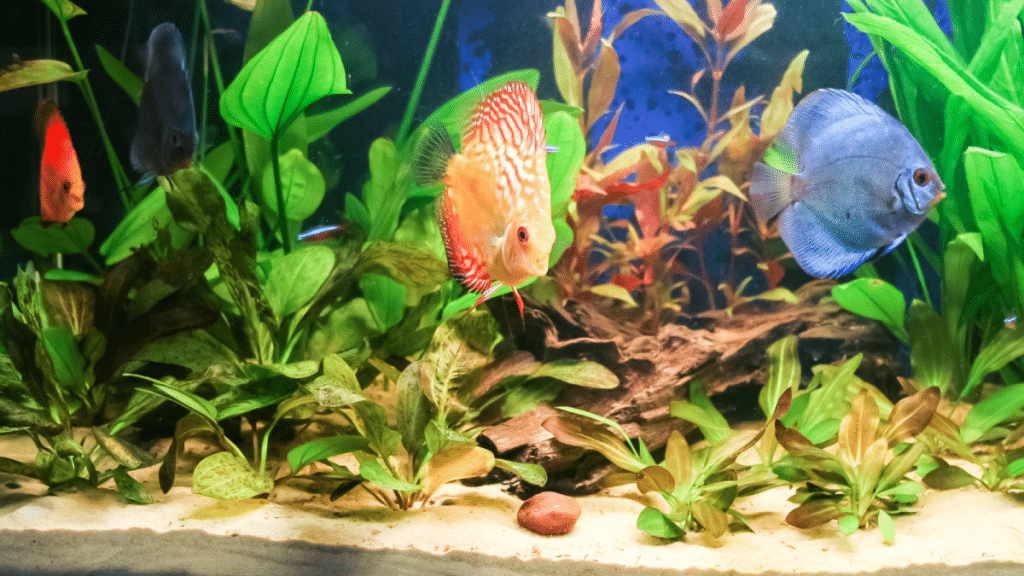A thriving planted aquarium is a sight to behold – a vibrant underwater world teeming with life and colour. However, achieving this lush aquascape requires more than choosing the right plants; it starts with selecting the correct substrates. This material lining the bottom of your tank is crucial in providing essential nutrients and anchoring your aquatic greenery.
With many options available, navigating the world of aquarium substrates can feel overwhelming. This guide will explore the most popular types, helping you make an informed decision for your underwater garden.
Soil-Based Substrates
Soil-based substrates are a favourite among aquascapers because they mimic the natural environment of aquatic plants. Composed of organic materials like peat moss, composted bark, and trace minerals, they are a powerhouse of essential nutrients that promote strong root development and lush plant growth.
These substrates also offer longevity, releasing nutrients slowly to provide a sustained source of nourishment over time, making them ideal for demanding plant species that require extra support.
However, it’s worth noting that soil-based substrates can initially cause water cloudiness, although this usually settles with time and proper filtration. They may also only be suitable for some fish, as some bottom-dwelling species might disturb the substrate and lead to persistent cloudiness.
Gravel
Gravel has long been a staple in the aquarium hobby, offering a versatile and affordable option for planted and fish-only tanks. Available in a variety of colours and sizes, gravel can complement any aquarium’s aesthetic. It’s a budget-friendly, readily available choice that suits many fish and plant species.
Gravel is also easy to maintain and doesn’t require specialised care. However, gravel lacks inherent nutrients, unlike soil-based substrates, potentially requiring additional fertilisation. Moreover, uneven gravel surfaces can trap debris, making cleaning more challenging.
Sand
Sand substrates offer a natural aesthetic, replicating the sandy riverbeds and lake bottoms that many aquatic plants and fish inhabit in the wild. This creates a visually appealing and naturalistic aquascape.
Sand is also suitable for certain fish species, like catfish and loaches, which thrive in sandy environments. Furthermore, sand is relatively inert and doesn’t significantly alter water chemistry.
However, it’s important to remember that sand can compact over time, potentially hindering root growth and oxygen flow. Its nutrient deficiency also means that regular fertilisation may be necessary.
Specialised Substrates
In addition to these basic substrate types, specialised nutrient-rich options are designed specifically for planted tanks. These substrates often incorporate volcanic rock, laterite, or other mineral-rich components to enhance plant growth. They provide readily available nutrients, promoting vigorous growth and vibrant colours in aquatic plants.
Some nutrient-rich substrates can even help buffer water parameters, creating a more stable environment for plants and fish. However, these specialised substrates often have a higher price tag than traditional options. It’s also crucial to monitor water parameters when using them to avoid imbalances.
Choosing the Right Substrate for a Thriving Aquarium
Selecting the best substrate for healthy aquarium plants depends on several factors. Consider the specific needs of the plant species you intend to grow, as some thrive in nutrient-rich substrates while others prefer inert options.
The behaviour and preferences of your fish are also important, as some might uproot plants or disturb the substrate. Think about your aquascaping goals and the aesthetic you’re aiming for. Do you prefer a natural look with sand or a vibrant planted tank with a soil-based substrate?
Finally, determine your budget, as substrate costs can vary significantly. By carefully considering these factors, you can choose a substrate that promotes healthy plant growth, creates a beautiful aquascape, and provides a thriving environment for your aquatic life. Remember, a well-chosen substrate is the foundation of a successful planted aquarium.
